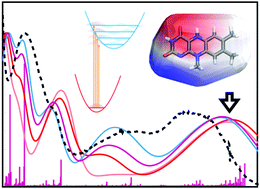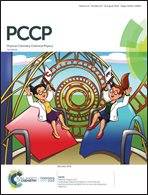Electronic spectra of flavin in different redox and protonation states: a computational perspective on the effect of the electrostatic environment†
Abstract
Flavins are versatile molecules due to their ability to exist in multiple redox and protonation states. At physiological conditions, they are usually encountered either as oxidized quinones, neutral semiquinones, anionic semiquinones, neutral hydroquinones, or anionic hydroquinones. We compute the electronic near-UV/vis spectra for flavin in each of these five states. Specifically, we compute vertical, adiabatic, and vibronic excitations for all excited states that have wavelengths longer than 300 nm. We employ the calculations to assign the peaks in the corresponding experimental UV/vis spectra from literature. We also compare the effect of polar and non-polar solvents on the spectra using a polarizable continuum model. Finally, we construct “electrostatic spectral tuning maps” for prominent peaks in each of the five states. These maps qualitatively describe how the flavin electronic spectra will be shifted by an anisotropic electrostatic environment such as a protein. Understanding how flavin's UV/vis absorption spectrum is modulated by its environment can aid in experiments employing flavin as a probe of internal electrostatics of a protein and in engineering new color variants of flavoproteins.



 Please wait while we load your content...
Please wait while we load your content...